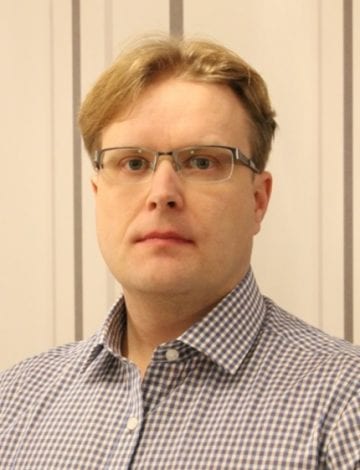CoastNET LIFE offers cost-effectiveness in nature management

Marko Takala,
Project Manager,
CoastNET LIFE, Parks & Wildlife,
Finland
The CoastNET LIFE project is funded by the European Union’s LIFE programme. The primary goal of the project is to create a coherent and well-managed biotope network by upgrading 44 Natura2000 areas on Finland’s west coast and Estonia’s north coast. The efforts primarily focus on biotopes in the habitat directive (Council Directive 92/43/EEC) whose conditions currently range from unfavourable to bad (U2) or unfavourable to inadequate (U1).
A better quality of biotope networks and a more wide-ranging surface area helps several species grow their population size and offers new areas to colonize. Together these help species to fight against habitat fragmentation and isolation of populations, while improving the resilience of populations against the effects of climate change. The effects of climate change are becoming more clearly visible in Baltic Sea ecosystems, and the rate of the change exceeds that of the ability of species to adapt to the situation.
The overall budget of the CoastNET LIFE project is EUR 8.7 million and the project will continue until March 2025. Project targets cost-effectiveness by careful and mutual planning of actions on every step at the target Natura2000 areas, the implementation of inventories, restoration activities of different habitats, and monitoring. All-inclusive planning also involves the evaluation of logistics and travel expenses, the possibilities of utilising volunteer work, and the use of outside labour.
Especially when working at sea, it is important to minimise costs of logistics and travel, which can form a significant part of overall expenses. This means that efforts are made to encourage travel sharing whenever there are activities in a target area, or when travelling to other target areas located nearby. One part of improving cost-effectiveness involves greater utilisation of citizen involvement. A concept of citizen involvement will be developed in the project that includes aspects such as a day dedicated to well-being at work for companies as well as volunteer work contracts. In the project 28 volunteer work camps are to be organised in Finland and Estonia, which will be responsible for a total of 3,085 volunteer work days. Improved cost-effectiveness makes it possible to handle a maximum number of areas, which also helps achieve the best final result both with respect to quality and surface area from the point of view of nature protection as well.
Natura2000 areas that need restoration will be analysed in the project using several different methods before restoration plans are made. In addition to GIS-based analyses, terrestrial and underwater biotope inventories, archaeological inventories, and inventories of several different groups of species will be conducted. The resulting information will be used for restoration plans in the project’s different Natura2000 areas. The restoration plans cover a total of 2,881 hectares. Their focus is on care for semi-natural habitats, large coastal meadows, mosaics of herb-rich forests and broad-leaved forests, primary succession forests habitats, sun-lit habitats, and Boreal Baltic Islets and small-sized open habitats.
A comprehensive restoration plan for the long term ensures that measures taken on the target Natura2000 area will be correctly proportioned and targeted, thereby reducing the risk of doing unnecessary or inappropriate work. Analyses conducted in the regions and restoration plans can be utilised in broader plans such as producing the Management Plan. Management plans in Finland include those in the Bay of Bothnia and the Archipelago Sea, which together cover more than 69,000 hectares, while the Estonian management plans cover more than 3,000 hectares. The restoration actions include clearing of overgrown habitats by manual labour, machinery, controlled burnings, and volunteer work. Semi-natural habitats will be taken under continuing management by grazing and invasive alien species will be removed. Well-planned restoration actions are needed in the target area over a period of several years because the recovery of nature is often very slow. For this reason, the effects of upgrading measures are systematically followed through the entire duration of the project and thereafter.
In the implementation of the CoastNet LIFE project, the importance of a methodical approach, perseverance, and cost-effectiveness for the achievement of a good outcome have often been raised. Measures used and developed in the project can be utilised generally in the future in care for coastal nature, as the project material is freely available. Experiences and information are also shared in seminars involving the various projects. This is important because the need for the development, quality, and cost-effectiveness of measures for caring for nature are emerging especially now that the need for nature protection is great in light of climate change and the growing wave of extinction. Funds used for nature protection and nature management are usually quite limited, which means that every euro must be spent carefully and methodically, which can succeed only through the help of carefully honed procedures and processes.
Expert article 2885
> Back to Baltic Rim Economies 1/2021
To receive the Baltic Rim Economies review free of charge, you may register to the mailing list.
The review is published 4-6 times a year.
